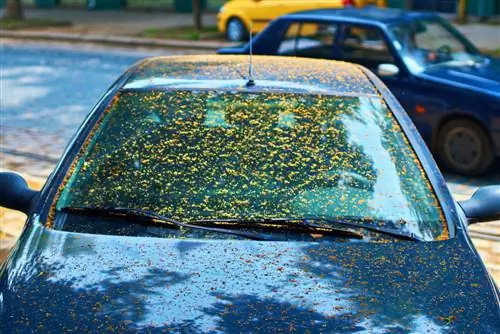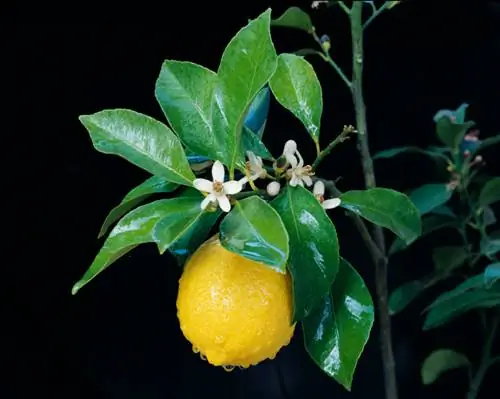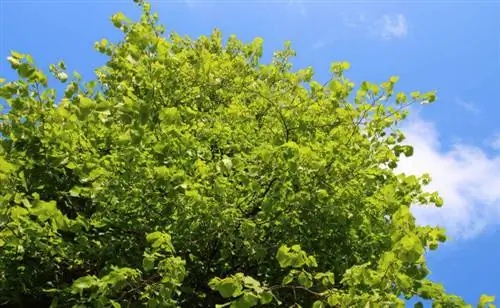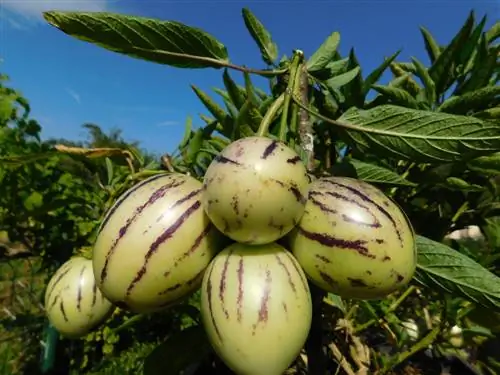- Author admin [email protected].
- Public 2023-12-16 16:46.
- Last modified 2025-01-23 11:21.
What's stuck there? In the summer, it can sometimes not be as cozy under the lime trees as usual. The culprit is sticky droplet rain that covers seats or parked vehicles with its annoying film. What exactly is this?
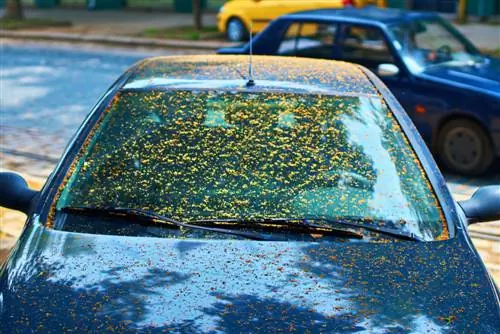
Why are lime trees sticky?
The stickiness on lime trees is caused by honeydew, the excretions of aphids. Aphids feed on the sap of lime leaves and excrete excess carbohydrates in the form of sugary sap known as honeydew.
Not flower nectar, but honeydew
The typical, sticky lime rain usually occurs during the flowering period of the popular park and garden tree - which is why the misconception has become established that it is flower nectar. But the droplets raining down have nothing to do with the linden blossom - they are the excretions of aphids, the so-called honeydew. The aphids appear more frequently around the same time as the linden tree blossoms. By the way, they also like to populate maple trees - so parking and sitting under them can be a sticky affair from May to July.
So again for clarity:
- sticky raindrops under linden trees, not flower nectar, but honeydew (aphid excretions)
- Also occurs under maple trees - so not specific to linden trees
What exactly is honeydew?
As I said: honeydew is aphid excretions - but specific ones, namely those that arise from their diet on the sap of linden leaves. This consists largely of carbohydrates and a smaller proportion of proteins. The lice mainly use the latter and excrete most of the carbohydrates in sugar form. The result is honeydew and, as virtually pure sugar juice, it is naturally sticky.
Joys and sorrows of honeydew
Honeydew in combination with fungus critical
Many people initially only see the disadvantage of honeydew - the sticky coatings on the car or on seating are of course annoying. And if the so-called sooty mildew fungus settles in it and is exposed to the sun, it can even cause damage to the paintwork. However, honeydew is usually harmless because it is water-soluble and can be easily washed away by the next rain. The aphids are then largely washed off the leaves. Honeydew is therefore a fair-weather phenomenon.
Food source for bees
Honeydew also has positive side effects - even if we can only benefit from them to a limited extent. On the one hand, some beneficial insects feed on it, especially bees. Apart from the fact that the flowers of the linden tree are also a popular source of food for the buzzing insects, honeydew has a special meaning, especially for (hobby) beekeepers: it provides the strong, dark aroma of forest honey.

